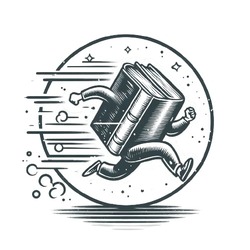One sentence summary:
“East of Eden, John Steinbeck Centennial Edition” is a powerful and timeless novel that explores the intertwined stories of two families in Salinas Valley, California, and delves into the themes of good and evil, freedom and destiny, and the human struggle for identity.
Book genre:
Fiction, Historical Fiction
Main topic of the book:
The main topic of the book is the human experience, as seen through the characters’ struggles with their own desires and limitations, and the wider context of social and historical changes in early 20th century America.
Key ideas:
- The concept of good and evil and the struggle between the two within human nature.
- The quest for identity and the impact of family and societal expectations on individuals.
- The roles of freedom and destiny in shaping one’s life choices and experiences.
- The enduring power of love, forgiveness, and redemption in the face of betrayal, loss, and trauma.
Main parts of the book and a short summary:
- Part 1: The Hamiltons – the first part of the novel introduces the Hamilton family, settler pioneers in the Salinas Valley, and their struggles for survival and success. It also introduces the Trask family, who will play a key role in the rest of the story.
- Part 2: The beginnings of a story – this part explores the early life of Adam Trask, his relationship with his brother Charles, and his first love with Cathy Ames, a manipulative and deceitful woman.
- Part 3: Cathy ames Trask – this section follows Cathy’s journey as she abandons her husband and newborn children to become a successful madam, while causing destruction and pain wherever she goes.
- Part 4: The triumph of love – the focus shifts to Adam’s twin sons, Cal and Aron, who are on a quest to discover their own identities and come to terms with their mother’s legacy. Their struggles and relationships mirror the ongoing battle between good and evil within the Trask family.
- Part 5: Dessert justice – the final section brings together all the major characters and their past actions, as they confront the truths of their past and seek redemption and reconciliation.
Key takeaways:
- The human experience is shaped by the eternal struggle between good and evil.
- Individual identity is a complex construction, influenced by family, society, and personal choices.
- Freedom and destiny play a role in shaping one’s life, but ultimately it is the choices made in the face of temptation and adversity that define one’s character.
- The power of love, forgiveness, and redemption can overcome even the darkest of pasts.
Author’s background and qualifications:
John Steinbeck (1902-1968) was a prolific American writer, acclaimed for his realistic and often socially conscious portrayal of American life in works such as “The Grapes of Wrath” and “Of Mice and Men.” He received the Nobel Prize in Literature in 1962 and remains one of the most renowned and beloved authors in American literature.
Target audience:
“East of Eden” appeals to readers who enjoy immersive and thought-provoking novels, as well as those interested in American history and society. It is also widely regarded as a classic of American literature and is often required reading for students.
Publisher and first publication date:
Penguin Books, September 19, 2002

